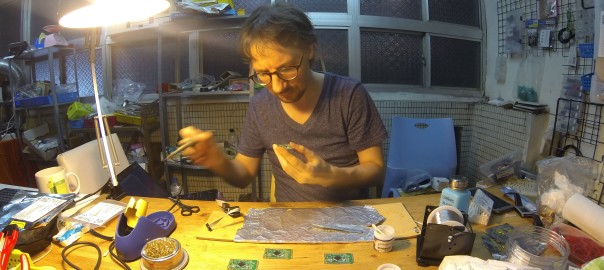I’m taking a few online courses every now and then since the awesome experience a few years back with Stanford’s hattrick of courses. I finish more seldom than I’d like it, but definitely learn a lot along the way. The latest one that has started this week is MIT’s Supply Chain Fundamentals course on edX, and it is already shaping up shaping up to be very influential, both in terms of to be a better professional (though at first it looks like I have very little to do directly with supply chains), and in general on how to view the world. To capture this feeling of magic when a piece of knowledge is new and this useful, I take stock here on the concepts and connections I’ve made, just after Week One.
Concepts and Connections
I’m not trying to be exhaustive, merely highlight the most “sticky” and immediately useful ideas I’ve picked up.
Push and Pull processes, the former when products are made in anticipation of demand (to a forecast), the latter when products are made in a response to demand . Pre-packaged sandwiches are example of “push”, while Subway’s sandwiches are “pull”. The former speeds things up for customers but adds forecasting and inventory burden, while the latter increases variety but adds time to fullfillment. It is important that I can play with adjusting my processes to make them “more push” or “more pull” to improve on the outcome I seek.
Push/pull also creates product categories such as made to stock, made to order, and engineered to order. In most companies or situations there are products in multiple categories, for example the sandwiches at Subway are made to order, but the cookies and drinks in the same store are made to stock. Or in the 7-Eleven stores almost everything is made to stock, except for the coffee and microwave food that are made to order. It is important to recognize what product is in what category, because they need different supply chains, and different ways to handle. Keep practicing to recognize the categories by taking a look at products around you and by figuring out why are they made to be in that particular category.
Products, customers, supply chains should be segmented, as not everything has the same needs. For example in the case of products I could segment by fast moving and slow moving products, steady demand or seasonal products, made to order or made to stock pieces. The segmentation is an art where practice develops intuition (side note: I can only have intuition regarding something that I have a lot of practice and experience with, as discussed in Thinking Fast and Slow). This is an important concept to take care of different products according to their needs, and make the most of the opportunities I have.
Traditionally in companies functions that related to supply chains (meaning the flow of goods, information and monies) are arranged into silos, separated from each other and optimized one by one. A lot could be improved by overhauling this view, and replacing silos with overall optimization, the whole outcome for a company, or even optimizing over multiple companies, multiple steps along the supply chain. The process of overall optimization turns constraints into variables that can be adjusted, creates complexity, but I think also has a potential to be a “10x” improvement (as opposed to incremental changes). This feels like an important thing thing to map out for any significant sized organization, and start thinking about the big picture.
The course includes some of math (yeah!:) and shows the importance of having data, data, data. I think it’s never too early to start getting data, and look around for opportunities, whether it’s a small project or a large company, though the real improvements are likely be in the latter. I think it’s very important to get into the mindset as soon as possible.
Impact on My Own Projects
I already feel a general change in how do I see the world: going to a restaurant, department store, a gym, or any place of business actually, now I see “stuff” more clearly, now I can feel the invisible web of supply chains that brought things together there, and I can make intelligent guesses on why things are one way and not another. This makes the world more naked to my eye, more understandable, and more exciting too!
More concretely I can feel impact in two areas already, one at my dayjob, and one for a project.
I work at a large company, and suddenly a lot of phenomena I picked up can be traced back to the “silo” structure, and local optimization that might leave the overall organization worse off than it should be. This is an empowering thought, almost going from a Don Quixote state of fighting windmills, to and engineer’s point of view of knowing what to improve on.
The second main impact is on my electronics online store I have on Tindie. It is quite low volume but picking up now, and it was interesting to realize that I was applying some of these concepts already before I’ve learned about them. For example how some of my boards were made to order and some made to stock depending on the volume I’ve expected. I’m looking forward applying more supply chain thinking to my store as the course progresses.
Are you also taking the course? What’s your impression and lessons learned?
